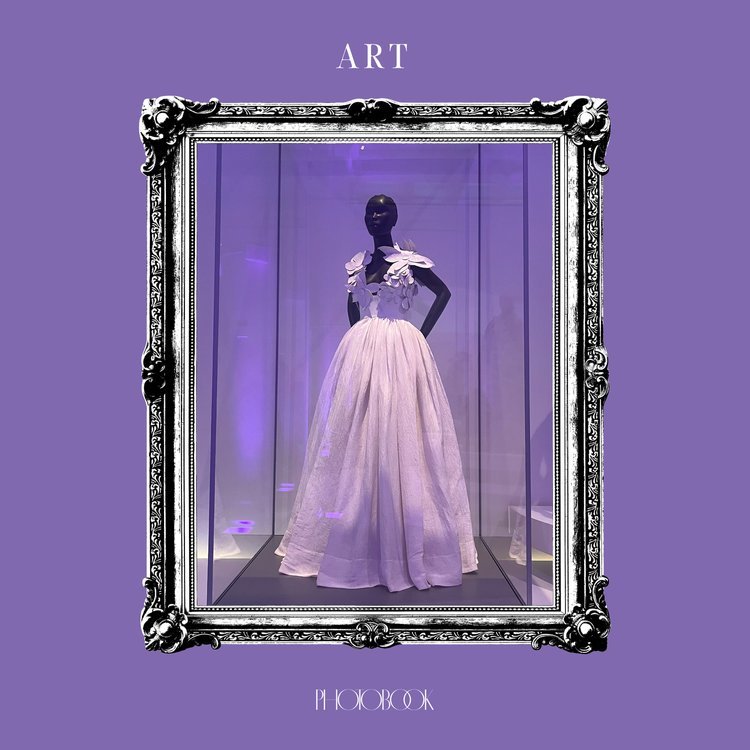Celebrating “Giant” through The Dean Collection of Swizz Beatz and Alicia Keys at the Brooklyn Museum
Ebony G. Patterson, ... they were just hanging out... you know...talking about...(...when they grow up...) // Courtesy of Ebony G. Patterson, Monique Meloche Gallery, and the Studio Museum in Harlem
At first thought of the word ‘giant’, things of gargantuan size often come to mind—skyscrapers, woolly mammoths, James and The Giant Peach, Bigfoot, California king beds. However, upon entering the Brooklyn Museum’s exhibit, “Giants: Art from the Dean Collection of Swizz Beatz and Alicia Keys,” visitors are greeted with some food for thought:
“WE NEED TO BE OUR MOST GIANT SELVES: TO THINK OUR MOST GIANT THOUGHTS, EXPRESS OURSELVES IN THE BIGGEST WAY POSSIBLE, AND GIVE OURSELVES PERMISSION TO BE GIANTS.”
Emphasizing the importance of taking up space, as well as the multifaceted meaning behind the word ‘giant’ (aside from mere specs), it is clear that the exhibit inspires one to think beyond limits, scratch beneath the surface, and spark “Giant Conversations.”
“Giants,” which runs through July 7th, 2024, features 98 works from Alicia Keys and Kasseem Dean’s (Swizz Beatz) personal collection—just a selection of the duo’s impressive thousand-plus art collection—spotlighting Black multigenerational and diasporic artists. This marks the first time the Deans have seen so much of their artwork in one place; each piece is a ‘giant’ in its own right, but together, they make a colossal statement intended to reflect the multiple facets of giant: quantity, size, impact, and renown.
The Dean Collection, which largely comprises living artists, is the ultimate embodiment of their philosophy of “artists supporting artists,” signaling the importance of not only championing vanguard artists, but also younger generations. The Deans have used their vast platforms to “uplift the present and future Giants of the art world,” making them ‘giants’ in their own right, outside solely their musical legacy.
The exhibit is organized thematically, with each room conveying a different aspect of ‘giant’. The journey begins with “Becoming Giants,” offering visitors a glimpse into the Deans’ creative journeys to becoming giants as musicians, producers, songwriters, and collectors. It displays mementos from their careers, such as Keys’ piano featured in the music video for “We Are Here.” The first artworks introduced in this section include Kehinde Wiley’s large, individual portraits of the couple, as well as a full room installation by Ebony G. Patterson.
Kehinde Wiley, Portraits of Alicia Keys and Swizz Beatz // Courtesy of stephenfriedman.com
The first gallery room, entitled “On the Shoulders of Giants,” guides visitors through the works of Black vanguard artists such as Jean-Michel Basquiat, Ernie Barnes, and Kwame Brathwaite, who depicted the social complexities of their time and laid the foundations for younger generations. Among the first works showcased includes Basquiat’s Untitled (Langston Hughes), in which the late artist pays homage to the 20th century poet, Langston Hughes, aiming to shed awareness of his work beyond the Black community. Following is a trio of Kwame Brathwaite’s photographs depicting the 1960s “Black is Beautiful” movement.
Left: Jean Michel Basquiat, Untitled (Langston Hughes) // Courtesy of Romi Bachar
Right: Kwame Brathwaite, Untitled (Model Who Embraced Natural Hairstyles at AJASS Photoshoot) // Photo: Joshua White // JWPictures.com.
Before entering the next gallery, an alcove of living-room-esque furniture invites visitors to comfortably view a bright series of Barkley L. Hendricks landscape paintings, as they might appear in the Deans’ home.
Collection of Barkley L. Hendricks paintings
Left: Photo by Romi Bachar
Right: Photo by Danny Perez // Courtesy of the Brooklyn Museum
The following section of the exhibit, titled “Giant Conversations,” is divided into two parts. The first part, “Critiquing Society,” features works by a younger generation of Black artists who critically examine various societal issues. Visitors are greeted with Meleko Mokgosi’s largest work to date, Bread, Butter, and Power (2018), a 21-piece panel depicting everyday scenes in Botswana: distinctive hair rituals, uniformed Black school children, a colorful fruit stand. Brooklyn Museum curator Kimerbli Gant explains, Mokgosi’s work is “layer upon layer upon layer of history. It’s an epic of the mundane.”
Meleko Mokgosi, Bread, Butter, and Power // Photo courtesy of thrillist.com
Mokgosi’s work is followed by powerful pieces from Nick Cave, Jerome Lagarringue, Hank Willis Thomas, and Derrick Adams. Cave’s mixed media works, Soundsuits and Tondo are described as “wrapping injustice in beauty,” so much so that one is almost blinded by the serotonin-inducing vibrant colors and tactile materials. Soundsuits is Cave’s response to police brutality, and Tondo reflects neuroimaging scans of Black youth living in violent settings.
Left: Nick Cave, Soundsuits // Courtesy of W Magazine
Right: Nick Cave, Tondo // Courtesy of W Magazine
Photo: Danny Perez // Courtesy of the Brooklyn Museum
While several of the works in this stage reflect harsh injustices, others offer more playful odes celebrating Black joy, like Adams’ Floater 74, which portrays sunbathers and pool floaters in neon hues. These more joyful pieces lead into the second portion of “Giant Conversations,” which is dedicated to “Celebrating Blackness.” Reminiscent of James Brown’s “Say it loud, I’m Black and I’m proud,” visitors are met with the works of Jamel Shabazz, Gordon Parks, Tschabalala Self, Deborah Roberts, and Lynnette Yiadom-Boakye.
Derrick Adams, Floater 74 // Courtesy of Derrick Adams Studio
Self’s mixed-media paintings exaggerate parts of the Black female body (such as hips and thighs), emphasizing their need to be “appreciated rather than hidden.” Similarly questioning the representation of the Black female body, sociologist and artist Frida Orupabo has created life-sized collages depicting their fragmented figures in response to incomplete representation in visual archives.
Left: Tschabalala Self, Father // Courtesy of the Brooklyn Museum
Right: Deborah Roberts, The Visionary // Photo: Glenn Steigelman // Courtesy of Swizz Beatz and Alicia Keys
The Deans possess the largest private collection of Gordon Parks photographs, famous for his extensive work capturing the civil rights movement, and breaking barriers to becoming the first Black staff photographer at Life magazine. Visitors can view his photographs of Malcolm X, Muhammad Ali, as well as glimpses of his fashion photography.
Photographs by Gordon Parks // Photo: Rebecca Smeyne // Courtesy of The New York Times
The last section of the exhibit, titled “Giant Presence,” is dedicated to gargantuan works that remind us of the importance of taking up space: “The sky is not the limit – it’s just the view.” Representing colossal works by Arthur Jafa, Amy Sherald, and more by Mokgosi and Wiley, the Deans hope to inspire artists to not only shoot for the stars theoretically, but also on a physical scale. At the center of the room stands Jafa’s eight-foot sculpture, Big Wheel I, a massive monster-truck suspended from chains. Along the walls hang paintings such as Wiley’s Femme piquée par un serpent.
Kehinde Wiley, Femme piquée par un serpent // Photo: Glenn Steigelman // Courtesy Of Swizz Beatz And Alicia Keys
Arthur Jafa, Big Wheel I // Photo: Danny Perez // Courtesy of The Brooklyn Museum
The exhibit concludes with Jarvis Boyland’s painting, Pop Out, seemingly juxtaposed with a mirroring photograph of Keys and Beatz embracing behind it. Pop Out depicts Boyland himself posing, arms locked with another artist friend, meeting the viewer’s gaze.
Jarvis Boyland, Pop Out // Photo: Romi Bachar
The close proximity of these two images as a final viewpoint suggests that within the “Giants” exhibit, viewers were not only invited into the Deans’ intimate world but also presented with a portrait of their relationship with each other, fellow artists, and the audience. This serves as the ultimate summary of their thesis, highlighting the journey to becoming giants through creativity, support for Black multigenerational artists, and efforts in demonstrating the importance of being giant.
Acting as a catalyst, the “Giants” exhibit urges viewers to contemplate our roles as agents of change and expression. It encourages us to embody our most “giant selves” and remember the power of expression and community. Now, beyond the museum walls, it is our responsibility to carry this spirit forward.
Article by Romi Bachar, Contributor, PhotoBook Magazine
Tearsheets by Daniel López, Art Director, PhotoBook Magazine
















